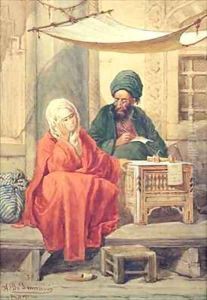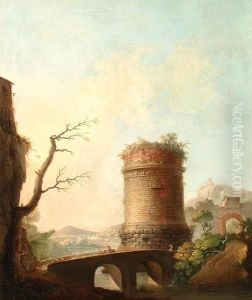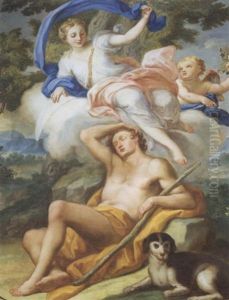Antonio de Dominici Paintings
Antonio de Dominici was an Italian painter, born in 1683 in Barra, a neighborhood of Naples, Italy. He belongs to the late Baroque period, an era that is characterized by dramatic use of color, light, and shadow, and his works often exemplify these qualities. De Dominici's life and career were deeply interwoven with the artistic currents and the cultural milieu of Naples during the 18th century, a vibrant period for the arts in the city.
De Dominici received his early training in the studio of Francesco Solimena, one of the most prominent Neapolitan painters of the time. Under Solimena's guidance, he developed a strong foundation in the principles of Baroque art, which would influence his later works. Despite being overshadowed by his illustrious master, de Dominici managed to carve out a successful career for himself, gaining commissions from both religious institutions and the Neapolitan nobility. His oeuvre includes frescoes, altarpieces, and canvases that are notable for their dynamic compositions and vibrant palette.
Throughout his career, Antonio de Dominici demonstrated a remarkable ability to adapt his style to the changing tastes of the period. By the 1730s and 1740s, his work began to reflect the early influences of the Rococo style, with lighter colors and more graceful figures. However, he never fully abandoned the dramatic intensity of his Baroque roots. Among his most famous works are the frescoes in the church of Santi Apostoli in Naples, which are celebrated for their vigorous style and emotional depth.
De Dominici was not only a painter but also an art theorist and historian. He wrote a biography of his mentor, Francesco Solimena, contributing valuable insights into the Neapolitan art scene of the 17th and 18th centuries. His writings provide a unique perspective on the artistic developments of his time and offer a glimpse into the lives and works of his contemporaries.
Antonio de Dominici passed away in 1759, leaving behind a legacy that, while not as widely recognized as some of his peers, represents a significant contribution to the Italian Baroque tradition. His works continue to be studied and admired for their technical skill, emotional intensity, and the unique blend of Baroque and early Rococo elements.


